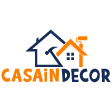Have you been thinking to buy Islamic art? Are you searching to buy Islamic art online?
Looks like you want your abode to be a visual, spatial expression of your faith and belief. This, so that when you have visitors at home, they will know that it is the home of a Muslim. To begin with, learn the basics of Arabic calligraphy, which is the primary feature of Islamic art. Arabic calligraphy is the writing Arabic text in stylish fonts – in Islamic calligraphy, the text is passages or verses from the Glorious Quran, or sayings from the Hadith.
Arabic calligraphy consists of different fonts, each developing in different epochs and different regions. Some fonts are listed below:
- Kufic: Developed in the seventh century in Kufa, Iraq, Kufic counts among the oldest Arabic fonts. Believed to be among the first writing styles in which the Glorious Quran was transcribed, Kufic had very long or very short horizontal strokes, round characters with tiny counters and no diacritical marks.
Over time, and with Arabs conquering non-Arab areas whose native population then entered into the fold Islam, the Kufic script began losing relevance for the purpose of transcribing the Quran – the reason primarily being the absence of diacritical marks which made it difficult for non-Arabs to read the script.
However, Kufic continued to be used for decorative purposes such as writing on ceramic crafts. It later diversified into floral or interlaced, bordered, and squared styles.
- Naskh: In the tenth century, a new font called Naskh was devised for the purpose of transcribing the Holy Quran. Unlike Kufic, Naskh had diacritical symbols and a cursive style – thus making it both easy to read and easy to write. Even now, it is used for transcribing the Quran. The standard font of writing the modern Arabic script, Naskh is the font used in newspapers, periodicals and official communication.
- Thuluth: “Thuluth” literally means one-thirds, or one-thirds of the letters are straight. In this font, lines are stretched with wide spaces between them. The dots and diacritical symbols are emphatic. All this makes Thuluth a grand font, thus rendering it suitable for engraving on walls of monuments, mosques and buildings. The Taj Mahal, to give just one examplet, has Thuluth font engraved on its walls.
- Nast’aliq: Developed in the courts of Persian, this font was used, besides for religious transcription, for secular purposes as well, such as writing court papers. The word ta’liq means “hanging”, as the letters slope slightly leftward, thus imparting the script a slight tilt. It is also used for writing Farsi, Urdu and Persian-derived languages.
- Diwani: This Arabic font was developed in the Ottoman courts in the sixteenth century. A highly ornate, intricate and elaborate font, Diwani has tilted letters and plenty of decorative dots that are densely written in the narrow spaces between and around the letters.
The above knowledge should be handy in case you have been looking to buy Islamic art offline or buy Islamic art online.
